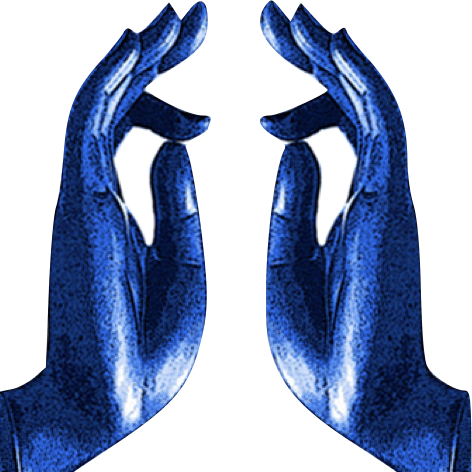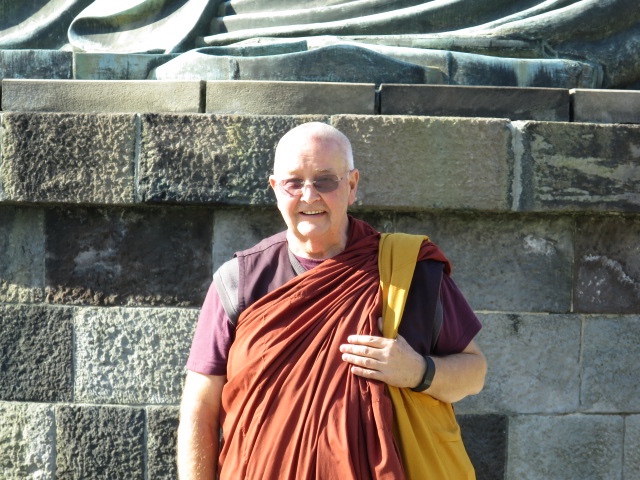In the Samyutta Nikaya 56.41 we encounter a very strange story called the Lokacintā sutta. In this sutta a man relates how he went off and sat down by a lotus pond to reflect on the nature of the world. Sitting there he saw a very strange thing or vision. The result was that he thought that he must be going mad, must be insane. Read the sutta if you want to know what he thought he saw. He returned to the city and told his friends about his vision and they too concluded that he was mad. However the Buddha stated that he was not mad and that what he had seen was real. However the Buddha went on to point out that this kind of “reflection’ is quite fruitless and useless in the famous concluding remarks to the sutta.
“Therefore, bhikkhus, do not reflect about the world, thinking: ‘The world is eternal’ or ‘The world is not eternal’; or ‘The world is finite’ or ‘The world is infinite’; or ‘The soul and the body are the same’ or ‘The soul is one thing, the body is another’; or ‘The Tathagata exists after death,’ or ‘The Tathagata does not exist after death,’ or ‘The Tathagata both exists and does not exist after death,’ or ‘The Tathagata neither exists nor does not exist after death.’ For what reason? Because, bhikkhus, this reflection is unbeneficial, irrelevant to the fundamentals of the holy life, and does not lead to revulsion, to dispassion, to cessation, to peace, to direct knowledge, to enlightenment, to Nibbāna.
“When you reflect, bhikkhus, you should reflect: ‘This is suffering’; you should reflect: ‘This is the origin of suffering’; you should reflect: ‘This is the cessation of suffering’; you should reflect: ‘This is the way leading to the cessation of suffering.’ For what reason? Because, bhikkhus, this reflection is beneficial, relevant to the fundamentals of the holy life, and leads to revulsion, to dispassion, to cessation, to peace, to direct knowledge, to enlightenment, to Nibbāna.
“Therefore, bhikkhus, an exertion should be made to understand: ‘This is suffering.’… An exertion should be made to understand: ‘This is the way leading to the cessation of suffering.’”
Samyutta Nikaya 56.41
We can spend a lot of time, indeed a great deal of our lives, “reflecting” on or wondering about all sorts of things which are not conducive to our well-being or happiness and that of others. The Buddha teaches in a direct (Ekayano) way the path which leads just to the ending of Dukkha or suffering in its multifarious forms. Just as you would not consult a doctor about a carpentry project or a butcher about delicate brain surgery, we should not be looking to the Buddha for the solution to things other than the overcoming of Dukkha.
In the Siṁsapā Sutta (SN 56:31) The Buddha reinforces the fact that he teaches just the overcoming of Dukkha.
“Once the Blessed One was staying near Kosambī in the Siṁsapā forest. Then, picking up a few Siṁsapā leaves with his hand, he asked the monks, “What do you think, monks? Which are more numerous, the few Siṁsapā leaves in my hand or those overhead in the Siṁsapā forest?”
“The leaves in the hand of the Blessed One are few in number, lord. Those overhead in the forest are far more numerous.”
“In the same way, monks, those things that I have known with direct knowledge but have not taught are far more numerous (than what I have taught). And why haven’t I taught them? Because they are not connected with the goal, do not relate to the rudiments of the holy life, and do not lead to disenchantment, to dispassion, to cessation, to stilling, to direct knowledge, to self-awakening, to unbinding. That is why I haven’t taught them.”
SN 56:31
Likewise in the Cela Sutta SN 56:34. Clothes, the Buddha illustrates again his central concern in a dramatic fashion.
“Bhikkhus, if one’s clothes or head were ablaze, what should be done about it?”
“Venerable sir, if one’s clothes or head were ablaze, to extinguish one’s blazing clothes or head one should arouse extraordinary desire, make an extraordinary effort, stir up zeal and enthusiasm, be unremitting, and exercise mindfulness and clear comprehension.”
“Bhikkhus, one might look on equanimously at one’s blazing clothes or head, paying no attention to them, but so long as one has not made the breakthrough to the Four Noble Truths as they really are, in order to make the breakthrough one should arouse extraordinary desire, make an extraordinary effort, stir up zeal and enthusiasm, be unremitting, and exercise mindfulness and clear comprehension. What four? The noble truth of suffering … the noble truth of the way leading to the cessation of suffering.
“Therefore, bhikkhus, an exertion should be made to understand: ‘This is suffering.’… An exertion should be made to understand: ‘This is the way leading to the cessation of suffering.’”
Cela Sutta SN 56:34
In choosing to do other than this we just wander about and fail to end our suffering or that of others. We become like a stick tossed into the air as in the Danda Sutta SN 56.33. A Stick
“Mendicants, suppose a stick was tossed up in the air. Sometimes it’d fall on its bottom, sometimes the middle, and sometimes the top. It’s the same for sentient beings roaming and transmigrating, hindered by ignorance and fettered by craving. Sometimes they go from this world to the other world, and sometimes they come from the other world to this world. Why is that? It’s because they haven’t seen the four noble truths. What four? The noble truths of suffering, its origin, its cessation, and the path.
That’s why you should practice meditation …”
Danda Sutta SN 56.33
There is the Buddha’s challenge and invitation.
With metta and gratitude



